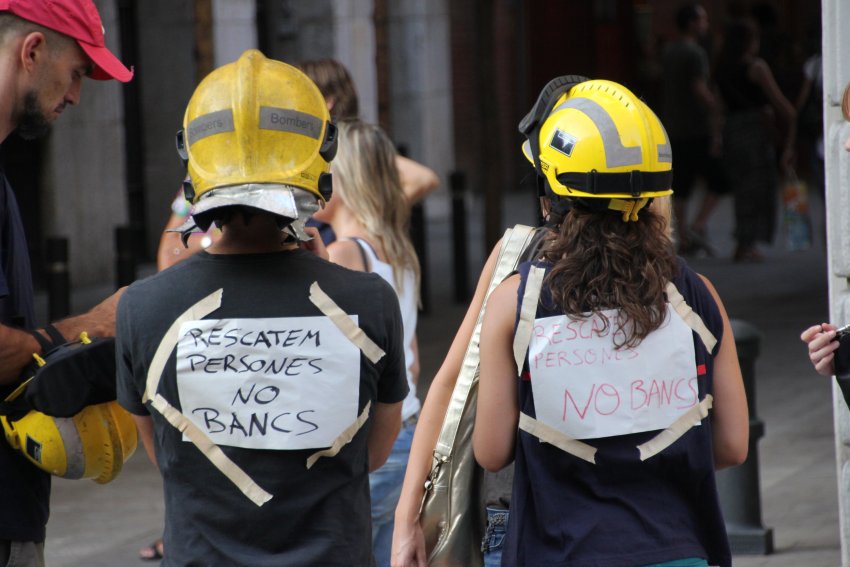
Waving banners, lighting fireworks and chanting against budget cuts, millions of people in Spain were on the march in more than 80 towns on July 19.
They were responding to government decisions made on July 11 that will cut €65 billion from services over the next two years. Within 24 hours, rallies were organised by the General Union of Labour and the Workers’ Commissions.
In Barcelona, a march of 400,000 people took more than two hours to crowd through the streets. Every section of society was represented — from pensioners to parents with their children, unionists, public sector workers, police, firefighters and youths. Participants in the Indignado (“The Outraged”) movement also took part.
Perhaps the biggest organised trade union contingent came from public transport, whose workers will be savaged by the cuts and privatisation plans.
The rally was led by many fire fighters from Barcelona and surrounding districts. Firefighters are called “Bombers” in Catalan and they “bombed” the streets with loud and colourful fireworks which created a haze of smoke and gunpowder and built the tension of the night-time march.
They were followed by a pensioners’ group, The Iaioflautes, developed out of the Indignados movement (known in Spain as 15M). Often referred to as “grey storm troopers”, they are a militant bunch of fluoro vest-wearing pensioners who now appear at all picket lines and rallies against government attacks.
Thousands of 15M supporters marched with trade unionists throughout the rally.
The cuts are already having terrible impacts on education and health, the largest areas of the budget, so teachers and health workers have been mobilising for some time. They were joined by two unions from the police force and widening layers of public sector workers including postal, transport and public administration, both regional and national.
This rally also drew big contingents of workers from cultural and professional areas such as TV and radio producers, actors and creative artists, scientific researchers and many others, giving an indication of just how deep the opposition is becoming.
The rallies have begun to show growing unity among traditional rivals. For example, the usual practice of opposing contingents or rival rallies was abandoned and lead banners featured anarcho-syndicalists alongside police unions.
The huge protests are an expression of growing anger in Spain that comes after the general strike of March 29 and huge support for the miners march on Madrid early this month. There is rising anticipation that a second general strike will take place in October.